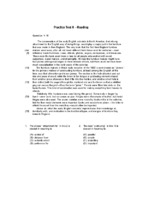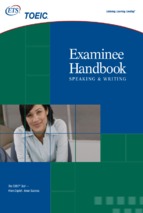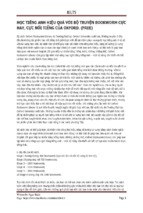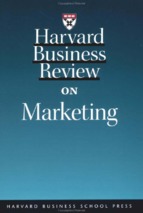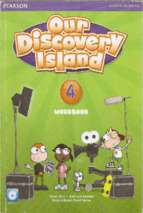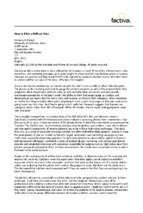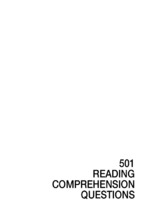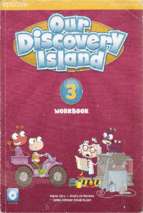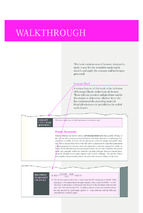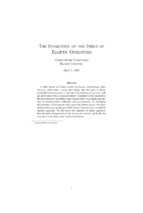How to get an MBA
How to get an MBA is a short study guide for prospective MBA
students wanting to know more about what is involved, for
students in a new intake at a business school and for those
seeking to prepare themselves for the experience to come.
Topics covered include how to:
•
•
•
•
•
•
•
•
work in teams
communicate effectively in classrooms
develop and manage personal networks
read and prepare a case
present written material
design and carry out a project
use library information sources
look for a job at the end of the course.
The book shows students how to make the most of their MBA
experience and how to make it work for them in the future.
Morgen Witzel is an independent writer, editor and lecturer. He
is author of the Dictionary of Business and Management and, with
Tim Ambler, of Doing Business in China.
How to get an MBA
Morgen Witzel
London and New York
First published 2000 by Routledge
11 New Fetter Lane, London EC4P 4EE
Simultaneously published in the USA and Canada
by Routledge
29 West 35th Street, New York, NY 10001
Routledge is an imprint of the Taylor & Francis Group
This edition published in the Taylor & Francis e-Library, 2001.
© 2000 Morgen Witzel
All rights reserved. No part of this book may be reprinted or reproduced or utilised in
any form or by any electronic, mechanical, or other means, now known or hereafter
invented, including photocopying and recording, or in any information storage or
retrieval system, without permission in writing from the publishers.
British Library Cataloguing in Publication Data
A Catalogue record for this book is available from the British Library
Library of Congress Cataloging in Publication Data
Witzel, Morgen.
How to get an MBA / Morgen Witzel.
p. cm.
Includes bibliographical references and index.
ISBN 0-415-22817-4 (Print Edition)
1. Master of business administration degree. 2. Business education. 3. Industrial
management--Study and teaching (Graduate) I. Title.
HF1111 .W58 2001
650'.071'173--dc21
00-056024
ISBN 0-415-22817-4 (Print Edition)
ISBN 0-203-18330-4 Master e-book ISBN
ISBN 0-203-18405-X (Glassbook Format)
Contents
Acknowledgements
Introduction
ix
x
1
Learning how to learn
Education and the service process 3
Setting and defining goals 5
Core benefits 6
Maximizing benefits 7
A resource-based view of the MBA programme 11
Developing a knowledge management strategy 15
Conclusions 19
1
2
Doing the groundwork: getting started on the MBA
Pre-programme preparation 20
Induction 22
Learning the ropes 23
Work/study groups 24
Meeting colleagues 25
Assessing resources 26
Setting up 28
Tuning your mind 29
Conclusions 31
20
3
Courses: the first channel of knowledge acquisition
Definition 33
Types of courses 35
Delivery methods 38
32
vi
How to get an MBA
Aims and processes 39
The role of faculty 39
Maximizing value from courses 42
Courses and the knowledge management process 46
Conclusions 47
4
Case studies: exercises in management skills
Definitions 49
Advantages and disadvantages of the case study
method 51
Reading and analysing cases 53
Approaches to case study resolution 58
Case studies and benefit maximization 60
Case studies and knowledge management 60
Conclusions 61
48
5
Working in teams: creating value from synergy
Why do it? 63
Organizing teams 65
The functioning of the team 66
The role of individual personality 68
Teamworking personalities 68
Functioning in groups 73
Benefit maximization 76
Knowledge management 77
Conclusions 78
62
6
Written communication: who writes, wins
Fitness for purpose 82
Structure 85
Style 88
Content 90
Knowledge management and written communication 92
Maximizing benefits 94
Conclusions 95
79
7
Working in the classroom: managing presentations and
discussions
96
The stage and the players 98
Presentations 100
Discussions 106
Contents
vii
Knowledge management 108
Benefit maximization 108
Conclusions 109
8
Research: generating and creating knowledge
Data, information and knowledge 112
Doing research 114
Using information and knowledge resources 120
Knowledge management 125
Benefit maximization 125
Conclusions 126
110
9
Projects: working in the real world
Identifying a project 128
Establishing aims 130
Developing relationships with the client 132
Setting up the research programme 133
Carrying out field research 135
Analysis of data gathered 139
Presentation 139
Following up 140
Knowledge management and projects 141
Benefit maximization 141
Conclusions 144
127
10 Networking: creating value out of harmony
Networks and their benefits 146
How they do it in China 148
Networks and ethics 150
Networking and the MBA 151
Networking and social life 155
Spouses and partners 157
After the programme 158
Benefit maximization 159
Conclusions 160
145
11 Exchange programmes
Choosing an exchange school 161
Cross-cultural learning 164
Doing courses 166
Opportunities for networking 166
161
viii
How to get an MBA
Problems and drawbacks 167
Knowledge management 168
Benefit maximization 168
Conclusions 169
12 Getting a job: recruitment during and after the
programme
What are recruiters looking for? 171
Focusing on goals 174
What to look for in a recruiting company 174
Presentation and professionalism 176
Giving the right impression 179
Conclusions 180
170
13 The MBA and lifelong learning
What is lifelong learning? 182
Why is it important? 183
What contribution does the MBA make to lifelong
learning? 184
Conclusions 186
181
14 Conclusion: broad vision, sharp focus
187
Index
193
Acknowledgements
This book is the product of many people’s experiences, and I am
grateful to the faculty, staff and students of the various business
schools with which I have had dealings over the past ten years.
Their names are too many to mention here, but I would like to
add a special mention to the faculty and students of the China–
Europe International Business School in Shanghai who made me
so welcome on my visit there.
Valuable comments on the original proposal came from
George Bickerstaffe and Gay Haskins, and my thanks to them
both. Thomas Wood added a couple of late suggestions. Marilyn
Livingstone has, as ever, been my greatest supporter and helper.
Most special thanks, however, must go to Nina Stibbe, who
commissioned this book, and to Jude Bowen who worked with
me for much of the writing process. Their confidence and
support have made this book possible. My thanks too to Julia
Swales and Anna Clarkson at Routledge.
Finally, I would like to thank Basil Hone for his superb illustrations, which I hope will make pleasant reading, even for those
who don’t approve of the book.
Introduction
The MBA is perhaps the most talked about and discussed form of
management education in the world. Despite its venerable age (the
first MBA degrees were awarded in the early twentieth century),
MBA programmes remain both popular and relevant. Although
critics of the programmes have been numerous, large companies
and increasingly small ones as well continue to see real value in the
MBA as the first stage in a professional career in management.
This book assumes that the reader has already made up his or
her mind to do an MBA, and probably chosen and been accepted
by a business school as well; indeed, the programme may
already have started. It is aimed equally at full-time, part-time,
executive and distance learning MBAs, although some parts of
the book will obviously be of more or less relevance, depending
on what programme the reader is joining.
The first important point is that there is no ‘one way’ to get an
MBA degree. There is no road map to success here, any more
than there is in the rest of a manager’s career (or life); tempting
though it may be to assume that there is.
Any idea that there should be such a simple solution must be
dispelled as soon as we begin to consider MBA programmes
themselves. Though they often have very similar curricula
and aims, MBA programmes are certainly not homogeneous.
Many programmes differ in terms of aims, philosophies and
teaching/delivery methods. Even more importantly, though,
MBA students are a very diverse bunch. Walking through the
campus of any leading business school, one will encounter people
from many different countries, backgrounds and professions.
Introduction
xi
Gone are the days – if they ever existed – when the mere possession of an MBA degree was enough to secure for the degree holder
a rosy future at the top level of a large corporation, complete with
large salary and generous perks. Many MBA students, to be sure,
do graduate into such jobs. Others don’t. The initials MBA no
longer have the pulling power they did thirty years ago. Corporate
recruiters no longer take the MBA degree itself as a guarantee of
quality. They look for many other factors, including:
•
•
•
the school from which the degree was granted
the programme which the graduate is attending or has attended
what practical experience the graduate may have gained
while on the programme
and, most important of all,
•
the personal qualities of the graduate, including evidence of
personal development while on the programme
Increasingly, companies are looking generally, at the qualities of
the institution, and specifically, at the individual graduate and
his or her qualities. In other words, they are not looking for the
MBA degree, but for the quality of the person who has it.
Many roads to the same end
During the 1980s and 1990s there arose a proliferation of different
models of MBA programmes: full-time and part-time, day and
evening, distance learning MBAs, executive MBAs (of which there
are at least a dozen different definitions), MBAs specializing in
finance, marketing, information management or other business
disciplines, MBAs specializing in European or Asian business, and
so on and on. All these are really just alternative delivery means to
the same end.
I should make it clear at the outset that the issues discussed
here are ones which affect all MBA students, regardless of the kind
of programme they are engaged in. The desirable end product – a
confident, capable person capable of taking on the heavy tasks of
senior management – remains the same.
xii
How to get an MBA
Getting an MBA degree, therefore, is ultimately about developing
yourself, improving your own personal qualities and improving
your ability to manage. This applies whether the student is
looking to change jobs or career paths, seek advancement within
a firm for which they already work, or start their own business.
How to Get an MBA, then, is a book which suggests ways in which
students can maximize the value of the MBA experience.
The MBA is a once-in-a-lifetime experience. It is, or can be,
extremely expensive in terms of money and time. For most who
go on such programmes, it is a life-changing experience. In order
to maximize the value of the MBA, students need to look beyond
the basics of classroom learning, important though these are, and
consider such issues as
•
•
•
•
•
gaining practical experience
developing networks and relationships
developing communications and interpersonal skills
broadening personal horizons
learning how to learn
Now more than ever, it is important to get an MBA not just for the
degree itself, but for the experience. The diploma hanging on your
wall at the end of the programme is no more than a sheet of paper.
What is important that comes out of the MBA is what is in your
mind. One of the most important concepts which this book introduces is the concept of the MBA as primarily a learning experience.
The important benefits of the MBA include not just the knowledge
that one absorbs while on the programme, but the necessary
learning skills that accompany this. The two are combined in a
single system which we refer to here as knowledge management.
The MBA only happens once. You will never be on this
programme again. You may never again have this opportunity to
learn – although, as is argued later in the book, the MBA is a first
step in a process of lifelong learning, and this is a formulative
learning experience. The ideas and skills you gain here will affect
your personal and professional life forever after.
This is a highly personal and subjective book, and I make no
apology for that. Its origins are to be found in a deep belief in
the value of the MBA as an incubator for managerial talent, and
xiv
How to get an MBA
an almost equal concern that some of those who embark on
MBA programmes do not always extract the maximum possible
value from the experience. Talent must not be wasted; the world
is too short of it already. If this book helps even a few people
emerge from MBA programmes with greater skills and abilities
than they might otherwise have done, then it will have
succeeded in its aims.
Chapter 1
Learning how to learn
You read a book from beginning to end. You run a business the opposite way. You start with the end, and then do everything you must to
reach it.
Harold Geneen
Before getting into the MBA programme proper, it is first necessaty to devote some time to the fundamental ideas on which this
book is based. In particular, there are two important processes
that go on all during the MBA programme. The first, which we
have already referred to, is benefit maximization. The second, more
practical process, is knowledge management. To consider how these
work and are related, consider the following six points:
1
2
3
4
Education is a service. Every student has some input into the
education they receive. What you take out depends in part
on what you put in.
Every MBA student will have a set of personal and career
goals, what they hope to achieve from the programme. These
will help to shape the learning experience.
Every MBA programme offers a series of core benefits, which
are built into the design of the programme.
Depending on the student’s goals (2), he or she can work to
maximize the benefits (3) he or she receives from the
programme, and this in turn will help to define more clearly
his or her own input (1) into the programme.
2
5
6
How to get an MBA
Once this picture is clear, the student can then work out what
resources are needed, developing a ‘resource-based’ view of
the MBA programme.
Finally, from this basis, the student can define a knowledge
management strategy which will enable maximization to occur.
Figure 1.1 below shows how these elements interrelate. The
student begins by assessing the benefits of the programme in light
of his or her personal and career goals, and then works out how
to maximize those benefits. (The maximization process can help to
further define those goals, hence this is shown as a circular
Figure 1.1 Relating goals and motivations to resources and strategy
Learning how to learn
3
process.) Maximization is in turn a circular process; the resources
provided by the programme combine with personal inputs to
develop a knowledge maximization strategy; and, as this
develops, so the types and levels of resources needed can change
(hence this too is shown as a circular process)
This is probably about as clear as mud. Don’t worry too much;
the chapters which follow should make it clear how this works.
The main theme, put more simply, is to focus on goals and then
work out how to get the most out of the MBA programme to
propel you towards those goals.
When should all this happen?
Ideally, of course, you will have had a chance to work all this out
in advance, before the programme starts. You will be clear about
your goals, and you will have a good idea of the benefits of the
programme. You will know what resources are available, and you
will have some idea of what you will need to put into the
programme. Thus you can begin to design the two loops, benefit
maximization and knowledge management.
But conditions are seldom ideal, and there is every chance that
you will need to do a lot of this in the early stages of the
programme. Chapter 2, getting started, deals with the vital first
few days of any MBA programme.
Education and the service process
In education, as in all services, the quality of the service depends
to some extent on the consumer. To use the jargon of the services
marketing experts, ‘the consumer is part of the production
process’. When we go to restaurants, for example, we make
choices from the menu, interact with the staff and sometimes
other customers, consume the food and wine we have ordered
and so on. We do not passively accept what the staff provide us
(well, not in most restaurants, at least), we are part of the process.
So it is with education. Learning is not a passive process; one
cannot simply sit in a classroom and let knowledge transfer from
lecturer to student through some form of osmosis. We learn
4
How to get an MBA
through interacting with others, lecturers and staff, fellow
students and so on. Our willingness to learn, our learning skills
(listening, analysing, communicating, etc.) and our personal
goals and needs all have an impact on what we learn and how we
learn it.
Real learning is an active process. It involves questioning
information which is found in lectures, textbooks and cases and
so on, and analysing it for value. It involves seeking out
resources and people who may have information or knowledge
which can be of use. It involves learning from real-life, everyday
situations, not just in formal settings.
Learning is not about absorbing information. It is about gathering and using knowledge. The importance of the student’s
own role in this process cannot be overemphasized. No matter
how good the teaching materials, no matter how high the quality
of the lecturers, one has responsibility for one’s own learning.
I
Figure 1.2 The service production process in education
Learning how to learn
5
Further information
If the reader is coming from a background in services marketing,
then much of the above will already sound familiar. If not, and if
the explanations given here are insufficient, then there are several
good books on services marketing which go into these concepts in
more detail. Recommended for novice readers are John E.G.
Bateson and K. Douglas Hoffman, Managing Services Marketing
(Fort Worth, TX: Dryden, 1999) and L.L. Berry and A. Parasuraman, Marketing Services: Competing Through Quality (New York:
The Free Press, 1991).
Setting and defining goals
Everyone enters an MBA programme with his or her own highly
personal set of goals. Generally, though, each of these goals falls
into one of two categories:
•
•
professional, which usually means advancing one’s career,
changing careers, getting a better job, or starting one’s own
business
personal, usually relating to self-development, vision and so
on, and possibly also including developing personal and
interpersonal skills such as communication and networking
There isn’t really much more to be said on this subject (this is a
rather obvious point anyway), except to acknowledge that most
people’s goals are complex rather than simple, and likely include
elements of both categories above. And in fact, a mix of the two
is by far the healthiest option. A concentration on the professional over the personal can lead to a narrow-mindedness and
lack of vision that can compromise rather than assist professional
advancement. Similarly, too much focus on the personal and not
enough on the professional can result in a well-rounded person
with a great vision – and no job.
- Xem thêm -



